Developmental stage specificity and the role of mitochondrial metabolism in the response of Arabidopsis leaves to prolonged mild osmotic stress
- PMID: 19906889
- PMCID: PMC2799359
- DOI: 10.1104/pp.109.148965
Developmental stage specificity and the role of mitochondrial metabolism in the response of Arabidopsis leaves to prolonged mild osmotic stress
Abstract
When subjected to stress, plants reprogram their growth by largely unknown mechanisms. To provide insights into this process, the growth of Arabidopsis (Arabidopsis thaliana) leaves that develop under mild osmotic stress was studied. Early during leaf development, cell number and size were reduced by stress, but growth was remarkably adaptable, as division and expansion rates were identical to controls within a few days of leaf initiation. To investigate the molecular basis of the observed adaptability, leaves with only proliferating, exclusively expanding, and mature cells were analyzed by transcriptomics and targeted metabolomics. The stress response measured in growing and mature leaves was largely distinct; several hundred transcripts and multiple metabolites responded exclusively in the proliferating and/or expanding leaves. Only a few genes were differentially expressed across the three stages. Data analysis showed that proliferation and expansion were regulated by common regulatory circuits, involving ethylene and gibberellins but not abscisic acid. The role of ethylene was supported by the analysis of ethylene-insensitive mutants. Exclusively in proliferating cells, stress induced genes of the so-called "mitochondrial dysfunction regulon," comprising alternative oxidase. Up-regulation for eight of these genes was confirmed with promoter:beta-glucuronidase reporter lines. Furthermore, mitochondria of stress-treated dividing cells were morphologically distinct from control ones, and growth of plants overexpressing the alternative oxidase gene was more tolerant to osmotic and drought stresses. Taken together, our data underline the value of analyzing stress responses in development and demonstrate the importance of mitochondrial respiration for sustaining cell proliferation under osmotic stress conditions.
Figures
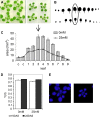
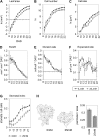

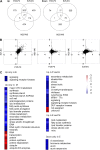
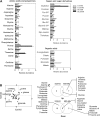



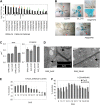


Comment in
-
Abscisic acid, ethylene and gibberellic acid act at different developmental stages to instruct the adaptation of young leaves to stress.Plant Signal Behav. 2010 Apr;5(4):473-5. doi: 10.4161/psb.5.4.11421. Epub 2010 Apr 3. Plant Signal Behav. 2010. PMID: 20383070 Free PMC article.
Similar articles
-
Ethylene Response Factor6 acts as a central regulator of leaf growth under water-limiting conditions in Arabidopsis.Plant Physiol. 2013 May;162(1):319-32. doi: 10.1104/pp.113.216341. Epub 2013 Apr 3. Plant Physiol. 2013. PMID: 23553636 Free PMC article.
-
DELLA signaling mediates stress-induced cell differentiation in Arabidopsis leaves through modulation of anaphase-promoting complex/cyclosome activity.Plant Physiol. 2012 Jun;159(2):739-47. doi: 10.1104/pp.112.195032. Epub 2012 Apr 25. Plant Physiol. 2012. PMID: 22535421 Free PMC article.
-
Pause-and-stop: the effects of osmotic stress on cell proliferation during early leaf development in Arabidopsis and a role for ethylene signaling in cell cycle arrest.Plant Cell. 2011 May;23(5):1876-88. doi: 10.1105/tpc.111.084160. Epub 2011 May 10. Plant Cell. 2011. PMID: 21558544 Free PMC article.
-
CIN-like TCP13 is essential for plant growth regulation under dehydration stress.Plant Mol Biol. 2022 Feb;108(3):257-275. doi: 10.1007/s11103-021-01238-5. Epub 2022 Jan 20. Plant Mol Biol. 2022. PMID: 35050466 Free PMC article.
-
Overexpression of a wheat phospholipase D gene, TaPLDα, enhances tolerance to drought and osmotic stress in Arabidopsis thaliana.Planta. 2014 Jul;240(1):103-15. doi: 10.1007/s00425-014-2066-6. Epub 2014 Apr 5. Planta. 2014. PMID: 24705986
Cited by
-
Role of the putative osmosensor Arabidopsis histidine kinase1 in dehydration avoidance and low-water-potential response.Plant Physiol. 2013 Feb;161(2):942-53. doi: 10.1104/pp.112.209791. Epub 2012 Nov 26. Plant Physiol. 2013. PMID: 23184230 Free PMC article.
-
Comprehensive dissection of spatiotemporal metabolic shifts in primary, secondary, and lipid metabolism during developmental senescence in Arabidopsis.Plant Physiol. 2013 Jul;162(3):1290-310. doi: 10.1104/pp.113.217380. Epub 2013 May 21. Plant Physiol. 2013. PMID: 23696093 Free PMC article.
-
Proline Coordination with Fatty Acid Synthesis and Redox Metabolism of Chloroplast and Mitochondria.Plant Physiol. 2016 Oct;172(2):1074-1088. doi: 10.1104/pp.16.01097. Epub 2016 Aug 10. Plant Physiol. 2016. PMID: 27512016 Free PMC article.
-
Proteomics approach to investigating osmotic stress effects on pistachio.Front Plant Sci. 2023 Jan 25;13:1041649. doi: 10.3389/fpls.2022.1041649. eCollection 2022. Front Plant Sci. 2023. PMID: 36762186 Free PMC article.
-
Novel Miscanthus genotypes selected for different drought tolerance phenotypes show enhanced tolerance across combinations of salinity and drought treatments.Ann Bot. 2019 Oct 29;124(4):653-674. doi: 10.1093/aob/mcz009. Ann Bot. 2019. PMID: 31665760 Free PMC article.
References
-
- Achard P, Cheng H, De Grauwe L, Decat J, Schoutteten H, Moritz T, Van Der Straeten D, Peng J, Harberd NP (2006) Integration of plant responses to environmentally activated phytohormonal signals. Science 311 91–94 - PubMed
-
- Achard P, Renou J-P, Berthomé R, Harberd NP, Genschik P (2008) Plant DELLAs restrain growth and promote survival of adversity by reducing the levels of reactive oxygen species. Curr Biol 18 656–660 - PubMed
-
- Aguirrezabal L, Bouchier-Combaud S, Radziejwoski A, Dauzat M, Cookson SJ, Granier C (2006) Plasticity to soil water deficit in Arabidopsis thaliana: dissection of leaf development into underlying growth dynamic and cellular variables reveals invisible phenotypes. Plant Cell Environ 29 2216–2227 - PubMed
Publication types
MeSH terms
Substances
Associated data
- Actions
LinkOut - more resources
Full Text Sources
Other Literature Sources
Molecular Biology Databases

